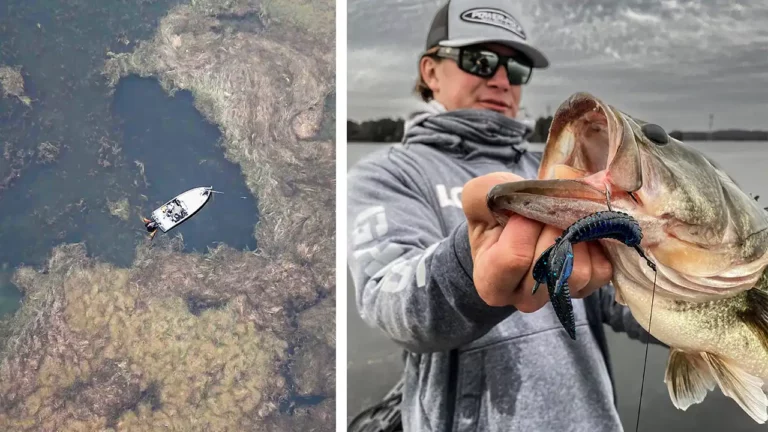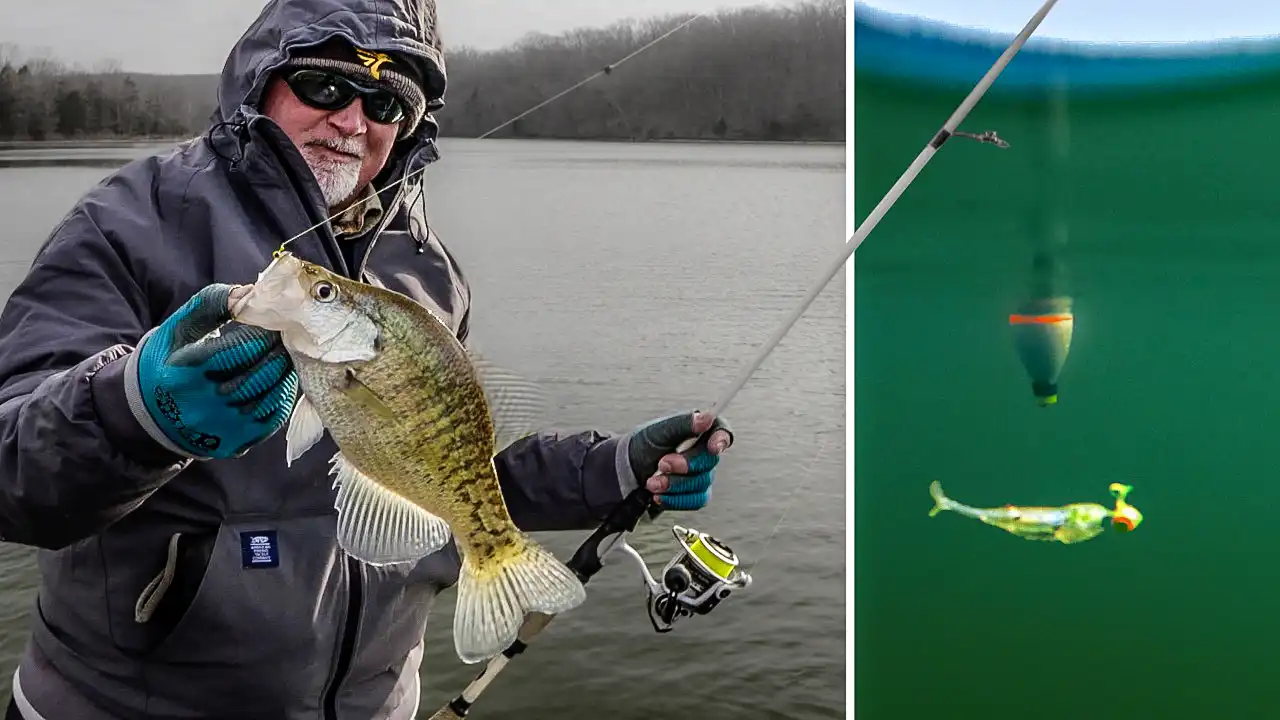In part, Lake Guntersville is a world-class bass fishery due to the abundance of grass, but punching grass mats in the winter isn’t a common tactic. Young gun Cal Lane seizes the opportunity for big, less-pressured bass using his same summer flipping and pitching program. Lane presents a detailed lesson in punching grass mats for winter bass, highlighting the characteristics of productive mats, an intelligent strategy for breaking them down, his favorite flipping bait and how to work it, and his go-to rod setup.
FIND PRODUCTIVE MATS
Like many other anglers, Lane loves winter jerkbait fishing bass, but punching mats produce bigger, less pressured fish than bass in traditional winter locations. Lane seeks out mats with a complex canopy and space underneath for hiding and ambushing forage. Also, deeper mats are usually more productive than shallow ones, the ideal being the 5- to 7-foot range. Pay attention to the wind. A little wind blowing into the mat consolidates bass and baitfish, which is key to establishing a pattern. As always, finding the forage, be it bluegills or shad, is the best indicator of bass presence.
FEATURED PRODUCT (retail links)
- PLASTIC – Reaction Innovations Sweet Beaver 4.20, color – Blank Check Buy at Omnia Fishing Buy at Tackle Warehouse
- HOOK – TroKar TK133 Pro-V Flippin’ Hook, 4/0, buy at Omnia Fishing
- WEIGHT – Flipping Weights, buy at Omnia Fishing
- PEG – Pegs, buy at Omnia Fishing
- ROD – Duckett Pro Series Casting Rod, 7’6″ Heavy Timmy Horton, buy at Tackle Warehouse
- REEL – Bass Pro Shops Johnny Morris Platinum Signature Casting Reel, 8.3:1, buy at Bass Pro Shops
- LINE – Bass Pro Shops XPS Hyper Braid, 50-pound, buy at Bass Pro Shops
FISH SLOW AND ORDERLY
Punching mats in the winter isn’t the time to keep your trolling motor on high. Fish slowly and methodically. Lane flips the edges first, about a foot in, and then pitches progressively deeper into the mat. The bass are often set up at a set distance into the mat. Your job is to find the “line” or distance bass are positioned in the cover.
HOW TO WORK YOUR PUNCH RIG
Lane uses the same summer punching setup for winter bass. A 1-ounce flipping weight, a flipping hook, and you’re favorite low-profile plastic will get it done. His favorite plastic lure is a black and blue or green pumpkin beaver profile. A typical pitch involves letting the rig sink to the bottom. He then picks it up once, lets it fall to the bottom, picks it up twice, and returns it to the bottom before reeling it in for the next pitch. Most bites come on the initial drop, so always remain ready.
GO-TO ROD SETUP
Lane relies on a tried and true 7-foot, 6-inch heavy power flipping stick equipped with a fast reel and 50-pound braid. You need power and speed to handle big bass in heavy cover, while the fast gear ratio combats slack line. Some prefer a 65-pound braid, but lane feels a 50-pound is the ideal blend of strength and stealth. The smaller diameter braid comes off the reel easily, is less visible to the fish, and, most importantly, it’s quieter when it comes into contact with cover.
OTHER GEAR
- SHALLOW WATER ANCHOR – Power-Pole Blade Shallow Water Anchor 8′, buy at Tackle Warehouse
- SUNGLASSES – Costa Del Mar Fantail Pro, Silver Mirror, buy at Tackle Warehouse
















